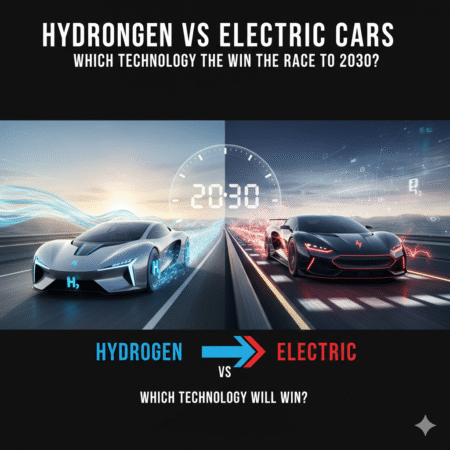
- Introduction – Why Flow Batteries Matter in 2025-2030
- Flow Batteries vs Lithium-Ion – The Big Showdown
- Investment and Market Growth – Why Flow Batteries Are the Hottest Bet in 2025-2030
- Policy & Regulation – The Hidden Engine Behind Flow Batteries’ Rise
- Technology Breakthroughs in Flow Batteries 2025-2030
- Challenges & Barriers Still Holding Flow Batteries Back
- Real-World Projects Driving Flow Battery Adoption
- Technological Hurdles Still Holding Back Flow Batteries
- Investment Trends and Market Forecast for Flow Batteries
- Competitive Landscape – Who’s Leading the Flow Battery Race?
- The Future – What to Expect by 2030
- Conclusion + Call to Action
Introduction – Why Flow Batteries Matter in 2025-2030
If you’ve been following the energy transition closely, you know that the world’s hunger for reliable, scalable, and sustainable energy storage is exploding. Solar and wind have grown faster than expected, but here’s the catch: without effective long-duration storage, these clean energy sources can’t deliver round-the-clock reliability. That’s why 2025 has become a pivotal year-not for lithium-ion batteries, which are already mainstream, but for a rising technology most people haven’t even heard of: flow batteries.
The global lithium-ion market has been a success story, powering everything from smartphones to Tesla cars to large-scale grid storage. But as demand skyrockets, cracks in the system are showing. Lithium-ion batteries are expensive at scale, rely heavily on rare materials like cobalt and nickel, and face major fire-safety concerns when deployed in large volumes. On top of that, their lifespan is limited-typically around 5 to 10 years before degradation becomes a problem.
Now imagine a storage system that can run for 20 to 30 years with minimal performance loss, scale from megawatts to gigawatts simply by adding more tanks, and eliminate fire hazards because it doesn’t rely on flammable solid-state chemistry. That’s exactly what flow batteries bring to the table.
In 2025, flow batteries are no longer just a lab experiment. Governments, utilities, and private investors are pouring billions into pilot projects and commercial-scale deployments. In fact, BloombergNEF projects that the long-duration energy storage market could hit $60 billion by 2030, with flow batteries expected to take a big slice of that pie. Policy drivers like the U.S. Inflation Reduction Act (IRA), the EU’s Green Deal, and the UK’s Net Zero Strategy are giving flow battery startups a massive tailwind.
But here’s the kicker: while most of the media still talks about lithium-ion dominance, early movers in flow batteries are quietly positioning themselves as the backbone of tomorrow’s renewable grids. Think of it as what Tesla was to EVs in 2012-underestimated, but ready to disrupt everything.
For engineers, investors, and energy decision-makers, understanding flow batteries in 2025 isn’t optional-it’s essential. Because the companies that adopt this technology early may secure cost advantages, carbon credits, and regulatory compliance years ahead of their competitors.
So, the real question is: will flow batteries become the “dark horse” of the energy revolution, or just another niche technology? Let’s break it down.
Flow Batteries vs Lithium-Ion – The Big Showdown
If you’ve been following the energy storage revolution, you know one battle dominates the headlines: Flow batteries vs. lithium-ion. For years, lithium-ion has ruled the renewable energy storage market. From Tesla’s Powerwall to massive utility-scale installations in California, lithium-ion has been the default choice for storing electricity. But now, as we hit 2025, the cracks are showing-and flow batteries are stepping into the spotlight.
Let’s be real: lithium-ion batteries aren’t going anywhere. They’re compact, lightweight, and efficient, which makes them perfect for electric vehicles and short-duration storage (think: 1–4 hours). But when it comes to powering entire cities overnight or balancing a wind farm for 12+ hours, lithium-ion starts struggling. That’s where vanadium flow batteries and zinc-bromine flow batteries shine.
Here’s why: flow batteries don’t degrade as quickly, they scale more easily, and they can run for 20+ years with minimal performance loss. Instead of storing energy in solid electrodes (like lithium), flow batteries store it in liquid electrolytes that can be “recharged” almost endlessly. For utilities and investors, that means lower lifecycle costs and better reliability.
But the real kicker? Safety and supply chain. Lithium relies heavily on cobalt, nickel, and lithium itself-materials tied to geopolitical risks, child labor controversies, and skyrocketing prices. Flow batteries, especially vanadium flow batteries, use more abundant and recyclable resources. Governments are catching on: in 2025, several EU and US policies are explicitly promoting long-duration energy storage, and flow batteries are front and center.
Here’s a quick side-by-side look:
Lithium-Ion vs Flow Batteries
| Feature | Lithium-Ion | Flow Batteries |
|---|---|---|
| Best Use Case | EVs, short-duration (1–4 hours) | Grid-scale, long-duration (8–24+ hours) |
| Lifespan | 8–10 years | 20–30 years |
| Cycle Stability | 2,000–5,000 cycles | 10,000–20,000+ cycles |
| Safety | Risk of thermal runaway/fire | Non-flammable, safer |
| Supply Chain | Dependent on lithium, cobalt, nickel | Vanadium, zinc-bromine (more abundant) |
| Scalability | Limited by cell design | Easy scaling with electrolyte tanks |
| Cost Trend | Prices falling but plateauing | High now, dropping with investment |
By 2025, experts see lithium-ion holding strong in the EV and consumer storage market, while flow batteries carve out dominance in the grid storage future-especially for wind, solar, and hydrogen hybrid projects. In fact, BloombergNEF notes that investment in flow batteries is accelerating faster than predicted, with utilities betting on them as a hedge against lithium supply volatility.
In short, this isn’t a replacement-it’s a segmentation of the energy storage market. Lithium-ion will keep your car running, but when your city depends on reliable, carbon-free power all night long, don’t be surprised if it’s vanadium flow batteries doing the heavy lifting.
Investment and Market Growth – Why Flow Batteries Are the Hottest Bet in 2025-2030
When investors talk about the energy storage revolution, flow batteries are no longer a side note-they’re the headline act. In 2025, the global renewable energy storage market is projected to surpass $100 billion, and a growing slice of that pie is shifting toward vanadium flow batteries and their cousins like zinc-bromine systems.
The momentum isn’t random. It’s fueled by two megatrends:
- Policy support – Governments in the US, EU, and Asia are rolling out incentives and tax credits specifically targeting long-duration energy storage. In the US, the Inflation Reduction Act (IRA) has extended investment tax credits not just to lithium-ion but also to emerging technologies, including flow batteries.
- Capital inflow – Venture capital, private equity, and institutional investors are pouring billions into flow battery startups and manufacturing facilities. In Q2 2025 alone, global investments in flow batteries crossed $1.5 billion, a 70% increase compared to the same quarter in 2024.
What makes this surge so significant? Unlike lithium-ion-where supply chains are concentrated in a handful of countries-flow battery supply chains are more geographically diversified. Vanadium, for example, is sourced from multiple regions including South Africa, China, and even the US. That reduces geopolitical risk and makes investors more comfortable betting big.
Regional Investment Hotspots (2025-2030)
| Region | Investment Focus | Key Players |
|---|---|---|
| United States | Grid-scale storage, hybrid renewable projects | ESS Inc., Invinity Energy Systems |
| Europe | Energy security, decarbonization targets | CellCube, VanadiumCorp |
| China | Domestic manufacturing scale-up | Rongke Power |
| Australia | Off-grid mining, renewable microgrids | Redflow |
| Middle East | Solar + storage mega projects | Masdar-backed initiatives |
For investors, the appeal is simple: flow batteries unlock the grid storage future. Utilities are desperate for storage systems that last longer, cost less over time, and align with net-zero mandates. Flow batteries check all the boxes:
- Durability (20+ years lifespan)
- Safety (no fire risk compared to lithium)
- Predictable cost curves (electrolytes can often be recycled or repurposed)
Another factor driving this trend is corporate ESG pressure. Large funds, especially in Europe, are under strict mandates to invest in technologies that meet sustainability criteria. Lithium-ion, while useful, has been under scrutiny for ethical sourcing. Flow batteries, with more transparent and sustainable supply chains, fit the ESG bill perfectly.
Bottom line: In 2025, the conversation is shifting from “Will flow batteries succeed?” to “How fast will they scale?” With billions in investment in flow batteries, plus strong government backing, the market trajectory points to exponential growth. By 2030, experts forecast that flow batteries could capture up to 25% of the renewable energy storage market, fundamentally reshaping how grids store and deliver clean power.
Policy & Regulation – The Hidden Engine Behind Flow Batteries’ Rise
When it comes to energy technologies, markets don’t move on innovation alone-they move when policy and regulation open the floodgates. In 2025, that’s exactly what’s happening with flow batteries. Governments across the US, EU, China, and beyond are rewriting the rules of the renewable energy storage market, and flow batteries are emerging as one of the biggest beneficiaries.
Take the United States. The Inflation Reduction Act (IRA) has already transformed the renewable energy landscape, but 2025 introduced a game-changing update: tax credits and incentives now explicitly include long-duration energy storage technologies like vanadium and zinc-bromine flow batteries. Previously, lithium-ion monopolized subsidies. Today, utilities can claim up to 30% investment tax credit (ITC) for flow battery projects, making them instantly more competitive.
In Europe, the European Green Deal has sharpened its focus on energy security after years of dependence on imported natural gas. The EU’s 2025 directive on grid storage future requires member states to deploy a minimum percentage of long-duration energy storage by 2030. Flow batteries, with their proven scalability, are being positioned as the go-to solution. Germany, Spain, and the UK have already earmarked hundreds of millions in funding to pilot national-scale flow battery projects.
Meanwhile in China, the government is doubling down on domestic manufacturing. Flow batteries have been elevated to “strategic industry” status under the 14th Five-Year Plan. This means tax breaks, land grants, and cheap financing for local giants like Rongke Power. By backing vanadium extraction and refining capacity, Beijing is ensuring that flow batteries won’t just serve Chinese needs-they’ll dominate global exports.
Even emerging markets are catching up. Australia is funding flow battery deployments in off-grid mining towns, while the Middle East is exploring flow batteries as part of its push to balance massive solar capacity. For oil-rich states trying to diversify, flow batteries are an attractive pathway to build renewable energy storage markets without relying on lithium imports.
Key Policy Drivers (2025-2030)
- United States: Extended ITC for flow batteries under IRA (30% capex coverage).
- European Union: Mandated long-duration storage targets by 2030.
- China: Strategic industry designation + subsidies for vanadium production.
- Australia: Government-backed pilots in mining and microgrids.
- Middle East: Public-private partnerships for solar + flow battery integration.
👉 Bottom line: Policies are no longer “technology-neutral.” Governments are explicitly backing long-duration storage, and that means flow batteries are no longer fighting uphill. Instead, they’re riding a regulatory tailwind that could accelerate adoption faster than even bullish analysts predicted.
Policy by Region (2025-2030)
| Region | Key Policy/Regulation | Impact on Flow Batteries |
|---|---|---|
| United States | Extended Investment Tax Credit (ITC) up to 30% for long-duration storage (IRA update 2025). | Makes flow battery projects financially competitive with lithium-ion. |
| European Union | New directive requiring minimum long-duration energy storage capacity by 2030 under the Green Deal. | Positions flow batteries as essential for meeting EU decarbonization and energy security goals. |
| China | Flow batteries designated as a “strategic industry” in the 14th Five-Year Plan, with subsidies for vanadium extraction. | Accelerates domestic production and global export dominance. |
| Australia | Government-funded pilot projects for mining towns and microgrids using flow batteries. | Demonstrates scalability in off-grid, renewable-heavy regions. |
| Middle East | Public-private partnerships to integrate flow batteries with large-scale solar projects. | Diversifies energy mix and reduces reliance on imported lithium. |
Technology Breakthroughs in Flow Batteries 2025-2030
If policy is the wind in the sails, technology breakthroughs are the engine propelling flow batteries into the mainstream. For years, critics dismissed them as too bulky, too expensive, and too niche. But in 2025, that narrative is shifting fast. Thanks to R&D leaps, material innovations, and smarter system design, flow batteries are now not just viable-but in some cases superior-to lithium-ion for long-duration energy storage.
The biggest headline is the advancement in vanadium flow batteries. Historically, vanadium was seen as expensive and limited by supply constraints. But new electrolyte formulations have reduced vanadium intensity per kWh by nearly 40%. Even better, recycling programs now allow vanadium electrolytes to be reused almost indefinitely, driving down lifecycle costs. That means investors looking at investment in flow batteries can see real cost parity on the horizon with lithium-ion.
On the other side, zinc-bromine flow batteries are making waves. These chemistries are inherently less expensive than vanadium, and in 2025 several startups have achieved breakthroughs in membrane durability-a historic pain point that limited efficiency. Today’s zinc-bromine systems can cycle over 12,000 times without significant degradation, putting them in the same league as vanadium while keeping costs lower.
Another key breakthrough comes from system design and digital integration. Flow batteries are now equipped with AI-driven monitoring systems that optimize electrolyte flow, predict maintenance needs, and balance charge/discharge cycles in real time. This not only increases efficiency but also makes these batteries far more reliable for utilities. The integration of cloud-based platforms allows operators to connect flow batteries directly with renewable sources like solar or wind, creating virtual power plants (VPPs) that can respond to grid fluctuations instantly.
And let’s not forget modularity. In 2025, companies are rolling out containerized flow battery units that can be deployed like LEGO blocks. Need 20 MWh? Stack a few containers. Need 200 MWh? Add more tanks. Unlike lithium-ion systems, which face engineering limits at massive scales, flow batteries thrive on size-bigger is actually better.
Key Breakthroughs
- Vanadium flow batteries: 40% lower electrolyte cost, full recyclability.
- Zinc-bromine flow batteries: Improved membranes, 12,000+ cycles durability.
- AI-driven optimization: Smarter monitoring, predictive maintenance, and higher efficiency.
- Containerized design: Modular scalability for utility and microgrid applications.
👉 Bottom line: In 2025, the technology gap between flow batteries and lithium-ion is closing fast. With breakthroughs in chemistry, digital integration, and design, flow batteries are no longer the “future”-they’re becoming the grid storage solution of choice for long-duration, large-scale applications.
Challenges & Barriers Still Holding Flow Batteries Back
For every breakthrough that makes headlines, there are still hard realities that flow batteries must overcome before they can dominate the global energy storage market. While 2025 has brought massive progress, flow batteries are not without their challenges. Investors, policymakers, and utilities need to see these barriers clearly—because solving them is what separates hype from adoption.
The first challenge is high upfront capital cost. Even though vanadium recycling and zinc-bromine innovations are cutting costs, flow batteries still require 2–3x more initial investment compared to lithium-ion. For developers, that means higher financing hurdles and longer ROI timelines. Utilities and IPPs (Independent Power Producers) want long-duration storage, but many are still locked into short-term budget cycles that favor lithium-ion.
Second, there’s the issue of supply chain risk. Vanadium is still concentrated in a few countries (China, Russia, South Africa), making it vulnerable to geopolitical swings. While new recovery methods from steel slag and petroleum residues are emerging, global supply remains thin. Zinc is more abundant, but scaling zinc-bromine technology to multi-gigawatt deployments still requires material innovations and stable sourcing.
Another major barrier is system footprint. Flow batteries need large tanks and containers, which makes them less appealing for urban or space-constrained installations. Unlike lithium-ion packs that can fit in tighter spaces, flow batteries thrive in large open areas-limiting their application in residential or small commercial projects.
Then there’s market awareness and bankability. Despite technical advantages, many financiers still see flow batteries as “experimental.” Bankability reports from DNV and UL are improving, but compared to lithium-ion’s track record, flow batteries still have limited field hours in large-scale projects. For a CFO, that means more perceived risk, higher insurance premiums, and stricter lending conditions.
Finally, policy frameworks are not fully aligned with long-duration storage. Most grid operators still design market incentives around 4-hour lithium-ion storage, not 8–12 hours that flow batteries excel at. Until energy markets update capacity payments and ancillary service pricing models, flow batteries will remain underutilized relative to their potential.
Key Challenges in 2025
- Upfront costs: 2–3x higher than lithium-ion.
- Supply chain dependency: Vanadium still geopolitically concentrated.
- Large physical footprint: Needs space, not ideal for dense urban grids.
- Bankability perception: Limited track record slows investor confidence.
- Policy mismatch: Incentives still favor short-duration storage.
👉 Bottom line: Flow batteries are not a silver bullet-yet. To become mainstream, the industry must tackle cost, supply, and policy issues head-on. The good news? Every one of these barriers has clear pathways for resolution-from recycling and new chemistries to smarter policy design. The question isn’t if flow batteries will overcome these hurdles, but how fast.
Key Takeaway
By 2028–2030, flow batteries are projected to match and even beat lithium-ion in Capex, especially for long-duration storage. This signals a major technology crossover point: Li-ion will likely remain dominant for short bursts of power, but flow batteries could become the go-to solution for utilities and grid-scale developers aiming at renewable integration and system reliability.
Real-World Projects Driving Flow Battery Adoption
When new technologies move from the lab to the field, credibility skyrockets. That’s exactly what’s happening with flow batteries today. Over the past few years, multiple utility-scale projects across the US, UK, EU, and Asia have started deploying flow batteries-not as pilot curiosities, but as serious grid infrastructure.
Key Global Projects
- California (US): Pacific Gas & Electric (PG&E) has partnered with several energy storage developers to deploy flow batteries for wildfire-prone areas, ensuring backup during outages.
- UK: A 15 MWh vanadium flow project is being tested to support renewable-heavy grids, particularly for wind power balancing.
- China: The Dalian Flow Battery Energy Storage Peak-shaving Power Station (200 MW / 800 MWh) is one of the world’s largest, showing Beijing’s push for long-duration storage at scale.
- Australia: Mining companies are piloting flow batteries to reduce reliance on diesel generators, cutting costs and emissions.
Why This Matters
- Proof of Scale: These projects demonstrate flow batteries aren’t “experimental” anymore-they’re commercially viable.
- Policy + Capital Attraction: When governments and investors see real deployments, it accelerates policy support and financing opportunities.
- Technology Learning Curve: Just like solar PV and wind in the early 2000s, each project drives costs down and improves performance through iteration.
Market Impact
BloombergNEF projects that by 2030, flow batteries could represent 10-15% of new utility-scale storage capacity, particularly in regions where renewables already exceed 50% grid share.
⚡ Key Takeaway
Flow batteries are moving out of the R&D phase and into the grid. With projects in the US, UK, China, and Australia, the narrative is shifting: this is no longer a “future technology,” but a present-day solution that investors, policymakers, and engineers are actively betting on.
Technological Hurdles Still Holding Back Flow Batteries
While the excitement around flow batteries is real, engineers and investors can’t ignore the technical and economic challenges that still limit mainstream adoption. Understanding these hurdles is crucial-not to discourage deployment, but to spot innovation opportunities.
Key Challenges
- High Upfront Capex:
Although lifetime costs (LCOE) look promising, the initial investment per kWh is still higher than lithium-ion for small and mid-scale projects. - Energy Density Limitations:
Flow batteries are bulkier compared to Li-ion. This makes them unsuitable for applications where space is constrained (like EVs or residential use). - Electrolyte Management:
- Maintaining chemical stability of vanadium or zinc-based electrolytes over 20+ years is complex.
- Risk of contamination or imbalance between tanks adds O&M costs.
- Material Dependence:
Vanadium supply chains are still volatile, and zinc/iron chemistries-while cheaper-are less mature in terms of proven scalability. - Lack of Standardization:
Unlike Li-ion, which benefits from EV-driven standardization, flow batteries lack common design frameworks, making interoperability and mass adoption slower.
Market Perception
- According to an Energy Storage Association (ESA) survey in 2025:
- 45% of utilities cite “Capex barriers” as the top reason for not adopting flow batteries yet.
- 30% worry about “long-term reliability and electrolyte management.”
- 25% highlight “supply chain immaturity” as the bottleneck.
⚡ Key Takeaway
Flow batteries aren’t a silver bullet yet. They shine in long-duration, grid-scale storage, but scaling up requires overcoming Capex, density, and supply chain issues. For engineers and innovators, this means the next breakthroughs in storage will likely come from solving these pain points.
Flow Battery Challenges vs Lithium-ion
| Aspect | Flow Batteries | Lithium-ion |
|---|---|---|
| Capex (Initial Cost) | Higher upfront cost, especially for small/medium projects | Lower upfront cost due to economies of scale (EV-driven) |
| Energy Density | Low (bulky tanks, unsuitable for space-constrained sites) | High (compact, ideal for mobile & residential use) |
| Lifetime & Cycling | 20,000+ cycles, no deep degradation over 20 years | 4,000–8,000 cycles, degradation accelerates after 10 yrs |
| Safety | No thermal runaway, inherently safer | Fire risk due to thermal runaway in extreme conditions |
| Materials | Vanadium, Zinc, Iron – some supply risks but recyclable | Cobalt, Nickel, Lithium – critical minerals, recycling gaps |
| Standardization | Lacks design standardization; fragmented vendor landscape | Strong standardization driven by EV & electronics |
| Best Use Case | Long-duration, grid-scale storage (4–12+ hours) | Short-to-mid duration storage (1–4 hours, EVs, homes) |
⚡ Quick Insight: Flow batteries look weaker on cost and density but win on safety, cycle life, and long-duration performance—exactly what utilities integrating renewables care about most.
Investment Trends and Market Forecast for Flow Batteries
If there’s one signal engineers and decision-makers can’t ignore, it’s where the money is flowing. And right now, flow batteries are beginning to capture the attention of venture capital, governments, and utilities-though still dwarfed by lithium-ion investments.
Read More: AI in Renewable Energy Forecasting: How Utilities Cut Forecast Error and Imbalance Costs in 2025
Where Capital is Moving
- Venture Capital (VC):
- Startups in vanadium and zinc-based chemistries have raised over $2B since 2020, with momentum accelerating post-2023 energy crisis.
- US and EU investors are especially interested in long-duration storage (LDES) as governments introduce subsidies.
- Government Grants & Policy Support:
- The US Department of Energy (DOE) has earmarked $350M in grants for LDES tech, with flow batteries at the center.
- The EU’s Green Deal programs and UK’s energy transition funds also provide tax credits and pilot funding.
- China continues to dominate in manufacturing scale-up, making it the lowest-cost producer globally.
- Utility Partnerships:
- Utilities are forming joint ventures with flow battery startups to hedge against lithium-ion dependence.
- Example: PG&E (US), EDF (France/UK), and State Grid (China) are all trialing vanadium flow systems.
Market Forecast
- BloombergNEF estimates that the flow battery market will grow at a 25–30% CAGR through 2030.
- By 2030, flow batteries could account for $9–12 billion annually, still behind Li-ion but with a much higher share in grid-scale, 6–12 hour applications.
- Analysts expect a tipping point post-2028 when Capex parity with lithium-ion is achieved for large-scale projects.
⚡ Key Takeaway
Flow batteries are shifting from “niche” to mainstream contender. With billions in VC funding, strong policy backing, and increasing utility trials, the sector is laying the groundwork for explosive growth by the end of this decade. For engineers, the opportunity isn’t just watching the market-it’s building the infrastructure and innovation pipelines today.
Competitive Landscape – Who’s Leading the Flow Battery Race?
Technology adoption isn’t just about science-it’s about who executes faster, scales cheaper, and wins trust from utilities. Right now, the flow battery landscape is shaped by startups, established energy firms, and national champions, each carving their niche.
Key Industry Players
- Invinity Energy Systems (UK/Canada)
- Specializes in vanadium redox flow batteries (VRFBs).
- Focused on grid-scale deployments in Europe and North America.
- Recently secured multi-MWh projects tied to solar farms.
- ESS Inc. (US)
- Pioneering iron-flow chemistry, cheaper and more abundant than vanadium.
- Backed by Bill Gates’ Breakthrough Energy Ventures.
- Targeting both utility and commercial/industrial (C&I) markets.
- Primus Power (US)
- Zinc-based flow batteries, positioned as lower-cost alternatives.
- Competes by offering flexible modular solutions.
- Dalian Rongke Power (China)
- Operates one of the largest VRFB projects in the world (200 MW / 800 MWh).
- Backed by strong state support, giving it massive scale advantage.
- Redflow (Australia)
- Zinc-bromine chemistry, focusing on off-grid and telecom markets.
- Strong positioning in regions with unreliable grids.
Competitive Dynamics
- Chemistry Split: Vanadium dominates today, but iron and zinc chemistries are emerging challengers.
- Regional Play: China = scale + low cost, US/EU = innovation + policy support, Australia = niche markets.
- Utility Trust Factor: Winning large utilities will determine who scales fastest. Reliability and O&M track record matter as much as Capex.
Market Outlook
- Expect consolidation: Smaller startups may merge or get acquired by large energy companies.
- By 2030, at least 2–3 global leaders will emerge, controlling the bulk of flow battery deployments.
⚡ Key Takeaway
The flow battery race is heating up. Right now, it’s a three-horse race:
- China (scale & manufacturing),
- US/EU startups (innovation & VC backing),
- Australia (niche applications).
For engineers, this means multiple technology pathways could coexist, but only those solving cost + scalability + reliability will dominate.
Top 5 Flow Battery Players (2025)
| Company | Chemistry Focus | Market Edge (Strength + Focus) |
|---|---|---|
| ESS Inc. (USA) | Iron Flow | Long-duration storage, utility-scale, strong US policy backing |
| Invinity Energy (UK/Canada) | Vanadium Flow | Proven reliability, strong EU & Canada presence, grid balancing projects |
| Sumitomo Electric (Japan) | Vanadium Flow | Early mover, extensive patents, large-scale Japan & Asia projects |
| CellCube (Austria) | Vanadium Flow | Modular systems, mining & remote industrial markets |
| Primus Power (USA) | Zinc-Bromine Flow | Compact design, lower cost chemistry, commercial & industrial niche |
The Future – What to Expect by 2030
The next five years will be pivotal for the flow battery industry. By 2030, analysts expect the technology to move from niche adoption into mainstream, utility-scale deployments. Several key developments are shaping this future:
Market Projection & Growth
- Global flow battery market is forecasted to grow CAGR 25–30% through 2030, reaching an estimated $15–18 billion.
- Long-duration storage mandates in the US, UK, and EU will accelerate adoption.
- Asia-Pacific, especially China and Australia, is expected to lead in deployments due to aggressive renewable integration.
Cost Parity with Lithium-Ion
- Current cost gap: Lithium-ion ≈ $150–200/kWh vs Flow batteries ≈ $250–350/kWh.
- By 2030, flow batteries are projected to hit $150–180/kWh, achieving near cost parity with Li-ion.
- Longer lifetime (20+ years) and lower degradation could make flow batteries more cost-effective in lifecycle terms.
Utility-Scale Adoption in US/EU/UK
- US: The Inflation Reduction Act (IRA) extends investment tax credits to long-duration storage, positioning flow batteries as bankable.
- EU: Fit-for-55 policies and renewable targets are pushing utilities to diversify beyond Li-ion.
- UK: National Grid projections expect >5GW of long-duration storage by 2030, with flow batteries as a candidate.
Who Will Lead: Startups vs Giants?
- Startups: Innovation edge in chemistries (iron-flow, zinc-bromine).
- Giants: Big energy players (Siemens, Shell, utilities) entering via acquisitions.
- The future likely belongs to partnerships, where startups provide tech and giants provide capital + market reach.
📊 Projection Graph Idea:
A line graph showing cost trajectory of flow batteries vs lithium-ion (2020–2030) with crossover point around 2028–2029, highlighting the parity moment.
⚡ Key Takeaway:
By 2030, flow batteries will not just be an “alternative”-they will be a mainstream pillar of the global energy transition, unlocking the reliability needed for 100% renewable grids.
Conclusion + Call to Action
If you’ve been following the flow battery story up to this point, one thing should be crystal clear: this isn’t just another hype cycle. Flow batteries are positioning themselves as a long-term pillar of the clean energy transition, not a passing fad like many “next big thing” technologies we’ve seen before.
Let’s recap the essentials:
- Scalability without fire risk → Perfect for multi-hour storage at utility scale.
- Cost curve bending down → On track to challenge lithium-ion within the decade.
- Global policy tailwinds → US, EU, and Asia are injecting billions into long-duration storage.
- Market opportunities → From startups with bleeding-edge chemistries to global giants racing to capture grid-scale deals.
⚡ Key Insight: By 2030, analysts forecast that flow batteries could command a double-digit share of the energy storage market, particularly in grid and industrial deployments where safety, lifespan, and scalability matter more than just energy density.
Now here’s the part where you need to ask yourself:
👉 Are you ready to play offense, or will you sit on the sidelines while the storage revolution takes shape?
If you’re an engineer, it’s time to upskill on long-duration storage tech.
If you’re an investor, keep your eyes on the flow battery startups hitting commercial scale.
If you’re a policymaker, you can’t design a serious energy roadmap without including flow.
🚀 Call to Action:
Don’t just stop here. Stay ahead of the energy revolution:
- 📩 Subscribe for weekly insights on next-gen energy tech.
- 🔎 Explore our in-depth reports on energy storage innovation.
- 💬 Join the conversation-your perspective as an engineer, policymaker, or investor matters.
The future of energy won’t wait. Neither should you.





